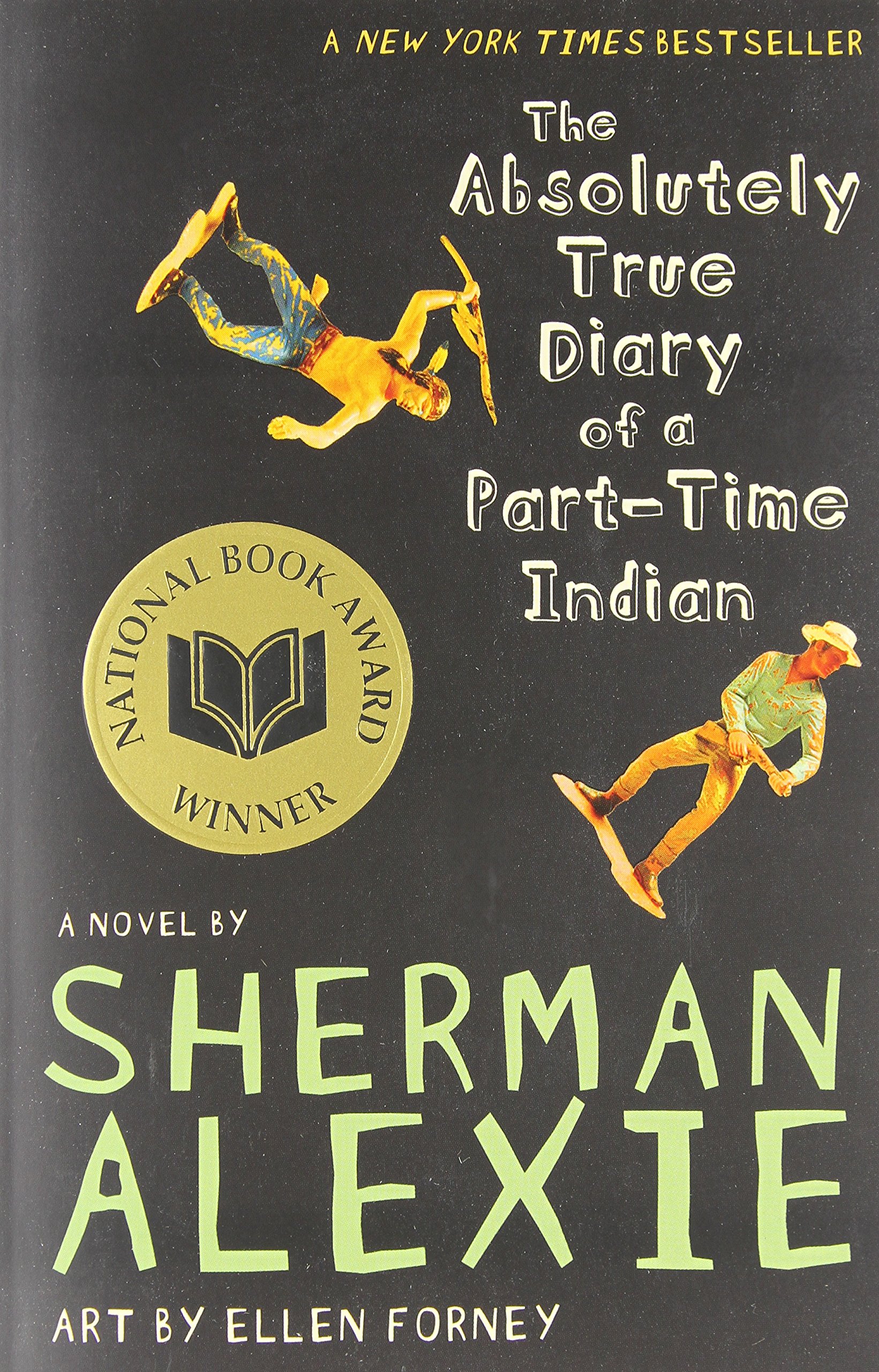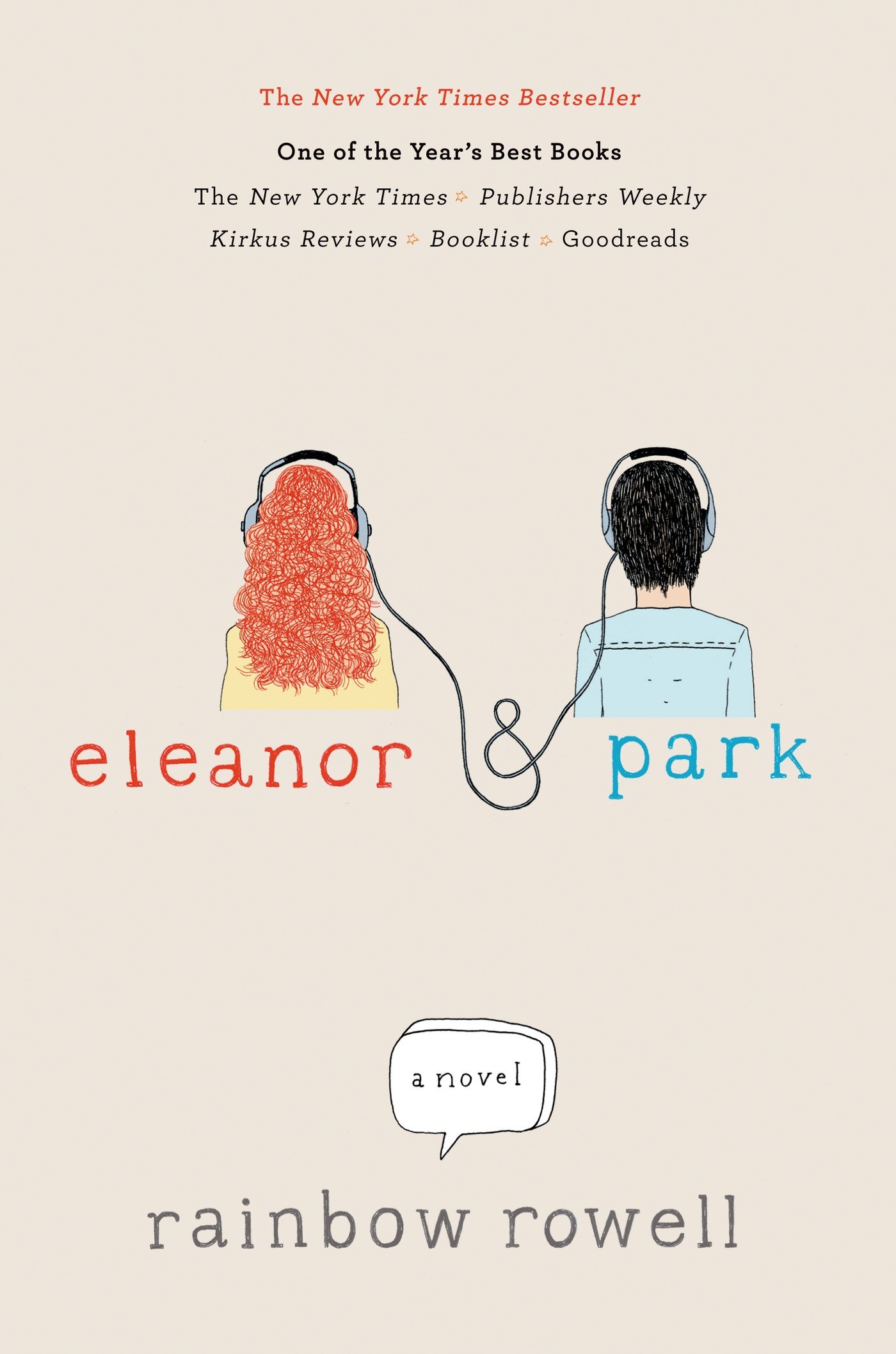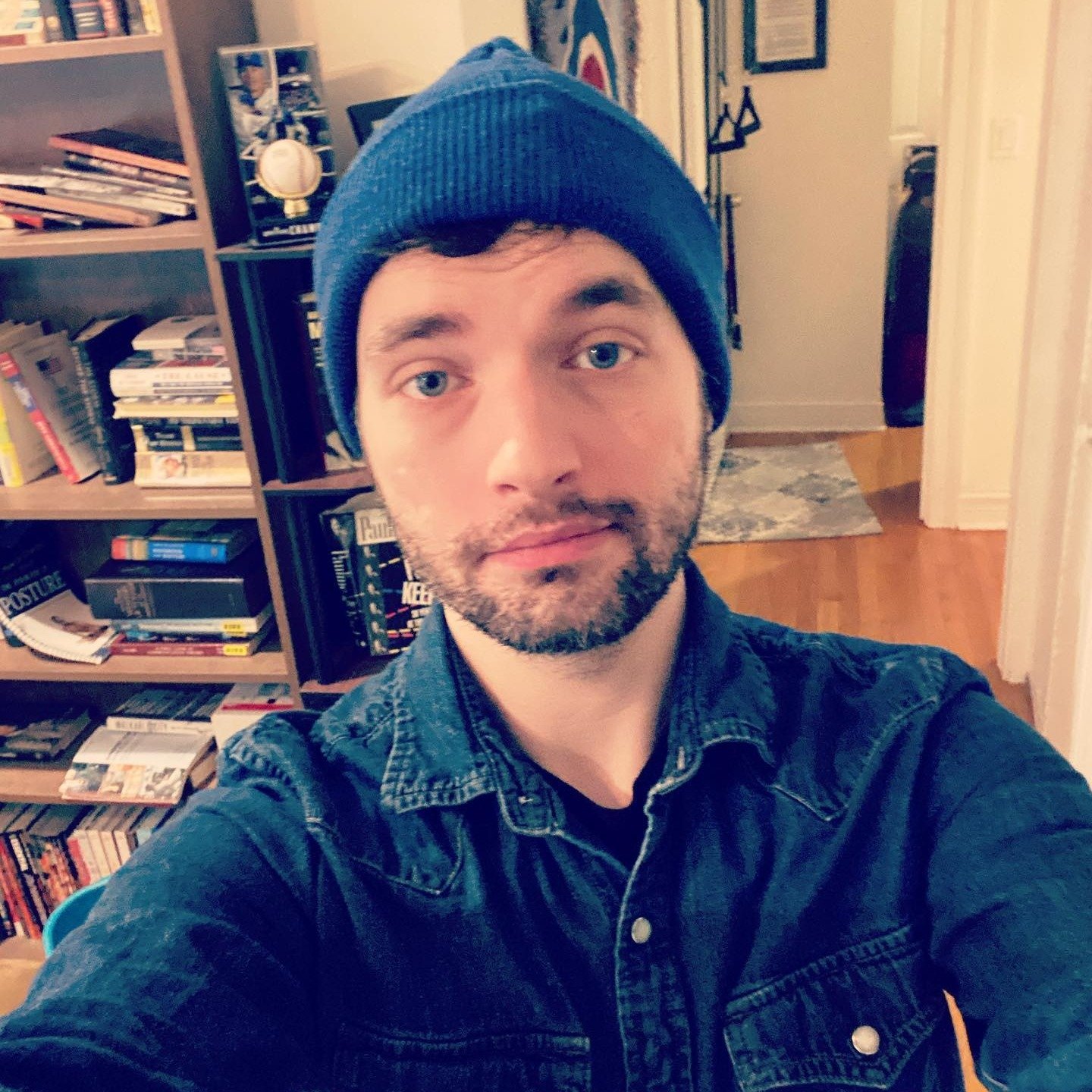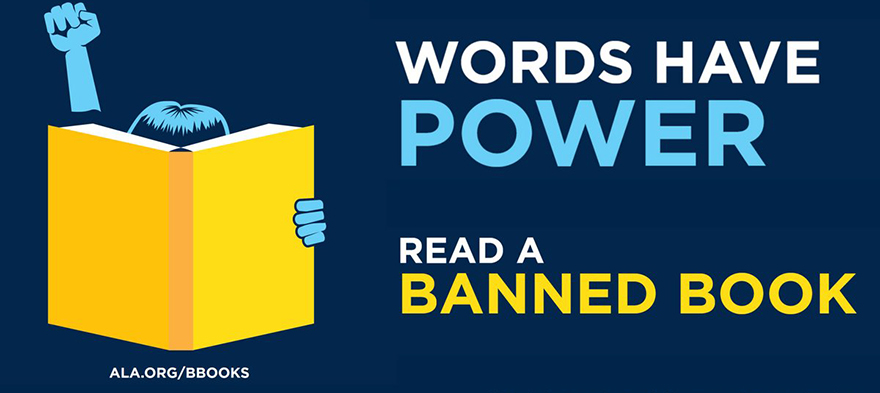Finding a book to read shouldn’t be complicated. After all, making a choice about what literature we choose to digest is an everyday decision, one that people mostly shrug off as nothing at all. But things
change a little in school districts, where students’ reading materials are often decided for them by teachers and faculty. Sometimes those decisions come with drama, when parents, school administrators and advocacy groups
debate what’s appropriate for their kids to read. Those challenged and banned books are honored during #BannedBooksWeek, a weeklong celebration of the freedom to read. The event brings together book lovers in “
shared support of the freedom to seek and express ideas—even those some consider unorthodox or unpopular.” In honor of 2017’s #BannedBooksWeek, head to your local library (or bookstore or Amazon) and pick up these 11 young adult titles that have been commonly challenged in public libraries and schools in America.
 The Pitch: Winner of the
2007 National Book Award for Young People’s Literature, “Diary” tells the story of 14-year-old Junior, who lives on the Spokane Indian Reservation (“rez”) with his family in Washington state. An incident occurs during the first day of school on the rez, which propels Junior to seek a different life by transferring to Reardan, an all-White high school in a town 22 miles away, where “the only Indian besides Junior is the school mascot.” At his new school, now Junior must reconcile his Indian self from the rez with a self that can fit in his new environment.
Why the Hate: Although “Diary” is often taught at middle and high school levels, it’s been a fixture on the American Library Association (ALA)’s list of banned and challenged books for years, even becoming
2014’s most “frequently challenged” book in U.S. libraries. Parents have taken issue with its “excerpts on masturbation,” claiming it “encourages pornography.”
According to PBS, the novel has also come under fire for “vulgarity, racism and anti-Christian content.” But Alexie himself seems unfazed about his popular book being banned,
saying in 2013, “I knew it would.”
The Pitch: Winner of the
2007 National Book Award for Young People’s Literature, “Diary” tells the story of 14-year-old Junior, who lives on the Spokane Indian Reservation (“rez”) with his family in Washington state. An incident occurs during the first day of school on the rez, which propels Junior to seek a different life by transferring to Reardan, an all-White high school in a town 22 miles away, where “the only Indian besides Junior is the school mascot.” At his new school, now Junior must reconcile his Indian self from the rez with a self that can fit in his new environment.
Why the Hate: Although “Diary” is often taught at middle and high school levels, it’s been a fixture on the American Library Association (ALA)’s list of banned and challenged books for years, even becoming
2014’s most “frequently challenged” book in U.S. libraries. Parents have taken issue with its “excerpts on masturbation,” claiming it “encourages pornography.”
According to PBS, the novel has also come under fire for “vulgarity, racism and anti-Christian content.” But Alexie himself seems unfazed about his popular book being banned,
saying in 2013, “I knew it would.”
 The Pitch: “Eleanor and Park” tells the story of Eleanor, a 16-year-old girl with curly red hair, and Park, a half-Korean, 16-year-old boy. The two misfits meet on a school bus during Eleanor’s first day at the school, and they immediately forge a bond over comic books and mix tapes full of ‘80s music. Over time, their bond of friendship evolves into a
first-love story for the ages. Eleanor finds solace in Park’s company, and Park adores everything about her. However, their relationship is tested by Park’s parents’ non-approval and Eleanor’s threatening family situation. Despite its young adult genre, this New York Times bestseller has claimed fans of all ages and walks of life and inspired a
plethora of beautiful fan art.
Why the Hate: What could people hate so much about such a well-loved book? Well, while there have been objections raised about the book’s “
problematic depiction of race and abuse,” the chief complaint from concerned parents is offensive language. When a group of high school librarians in Minnesota
named it as their school district’s summer read, it caused a dustup between a small group of outspoken parents opposed to the book and others who supported intellectual freedom. Once again, the haters are missing the point. As author Rainbow Rowell put it, “I use profanity in the book to show how vulgar and sometimes violent the characters’ worlds are. … When people call Eleanor & Park an obscene story, I feel like they are saying that rising above your situation isn’t possible. That if you grow up in an ugly situation, your story isn’t even fit for good people’s ears.”
The Pitch: “Eleanor and Park” tells the story of Eleanor, a 16-year-old girl with curly red hair, and Park, a half-Korean, 16-year-old boy. The two misfits meet on a school bus during Eleanor’s first day at the school, and they immediately forge a bond over comic books and mix tapes full of ‘80s music. Over time, their bond of friendship evolves into a
first-love story for the ages. Eleanor finds solace in Park’s company, and Park adores everything about her. However, their relationship is tested by Park’s parents’ non-approval and Eleanor’s threatening family situation. Despite its young adult genre, this New York Times bestseller has claimed fans of all ages and walks of life and inspired a
plethora of beautiful fan art.
Why the Hate: What could people hate so much about such a well-loved book? Well, while there have been objections raised about the book’s “
problematic depiction of race and abuse,” the chief complaint from concerned parents is offensive language. When a group of high school librarians in Minnesota
named it as their school district’s summer read, it caused a dustup between a small group of outspoken parents opposed to the book and others who supported intellectual freedom. Once again, the haters are missing the point. As author Rainbow Rowell put it, “I use profanity in the book to show how vulgar and sometimes violent the characters’ worlds are. … When people call Eleanor & Park an obscene story, I feel like they are saying that rising above your situation isn’t possible. That if you grow up in an ugly situation, your story isn’t even fit for good people’s ears.”
 The Pitch: In this beloved classic, Harper Lee introduces her readers to 6-year-old Scout, her older brother Jem and their attorney father, Atticus Finch. Although the novel initially paints a picture of Scout’s day-to-day life and the adventures with her brother and other friends in the small town of Maycomb, Alabama, the story soon focuses on its heart: the trial of a Black man named Tom Robinson, who has been accused of raping a young White woman.
Atticus has been appointed to be Tom’s lawyer, and the subsequent trial and its events change Scout and Jem’s worldview.
Why the Hate: As beloved as it is, Lee’s Pulitzer Prize-winning book has a place in history for being one of the
top banned classical novels. Parents, school administrators and advocacy groups claim “Mockingbird”’s “racially and sexually charged” themes are inappropriate for young readers. The novel has been challenged since as far back as 1977 and is to this day
still banned in public libraries and classrooms across the U.S and worldwide. In 2016, it was pulled by a Virginia school district
after a parent objected to the many mentions of the “N-word” in the novel’s text.
The Pitch: In this beloved classic, Harper Lee introduces her readers to 6-year-old Scout, her older brother Jem and their attorney father, Atticus Finch. Although the novel initially paints a picture of Scout’s day-to-day life and the adventures with her brother and other friends in the small town of Maycomb, Alabama, the story soon focuses on its heart: the trial of a Black man named Tom Robinson, who has been accused of raping a young White woman.
Atticus has been appointed to be Tom’s lawyer, and the subsequent trial and its events change Scout and Jem’s worldview.
Why the Hate: As beloved as it is, Lee’s Pulitzer Prize-winning book has a place in history for being one of the
top banned classical novels. Parents, school administrators and advocacy groups claim “Mockingbird”’s “racially and sexually charged” themes are inappropriate for young readers. The novel has been challenged since as far back as 1977 and is to this day
still banned in public libraries and classrooms across the U.S and worldwide. In 2016, it was pulled by a Virginia school district
after a parent objected to the many mentions of the “N-word” in the novel’s text.
------
1. The Absolutely True Diary of a Part-Time Indian by Sherman Alexie (2007)
 The Pitch: Winner of the
2007 National Book Award for Young People’s Literature, “Diary” tells the story of 14-year-old Junior, who lives on the Spokane Indian Reservation (“rez”) with his family in Washington state. An incident occurs during the first day of school on the rez, which propels Junior to seek a different life by transferring to Reardan, an all-White high school in a town 22 miles away, where “the only Indian besides Junior is the school mascot.” At his new school, now Junior must reconcile his Indian self from the rez with a self that can fit in his new environment.
Why the Hate: Although “Diary” is often taught at middle and high school levels, it’s been a fixture on the American Library Association (ALA)’s list of banned and challenged books for years, even becoming
2014’s most “frequently challenged” book in U.S. libraries. Parents have taken issue with its “excerpts on masturbation,” claiming it “encourages pornography.”
According to PBS, the novel has also come under fire for “vulgarity, racism and anti-Christian content.” But Alexie himself seems unfazed about his popular book being banned,
saying in 2013, “I knew it would.”
The Pitch: Winner of the
2007 National Book Award for Young People’s Literature, “Diary” tells the story of 14-year-old Junior, who lives on the Spokane Indian Reservation (“rez”) with his family in Washington state. An incident occurs during the first day of school on the rez, which propels Junior to seek a different life by transferring to Reardan, an all-White high school in a town 22 miles away, where “the only Indian besides Junior is the school mascot.” At his new school, now Junior must reconcile his Indian self from the rez with a self that can fit in his new environment.
Why the Hate: Although “Diary” is often taught at middle and high school levels, it’s been a fixture on the American Library Association (ALA)’s list of banned and challenged books for years, even becoming
2014’s most “frequently challenged” book in U.S. libraries. Parents have taken issue with its “excerpts on masturbation,” claiming it “encourages pornography.”
According to PBS, the novel has also come under fire for “vulgarity, racism and anti-Christian content.” But Alexie himself seems unfazed about his popular book being banned,
saying in 2013, “I knew it would.”
2. Lord of the Flies by William Golding (1954)
The Pitch: After a plane crash, a group of boys from a military boarding school find themselves marooned on a deserted island in William Golding’s “Lord of the Flies.” In an unsettlingly short amount of time, they devolve into savagery. Rocks are pushed, the head of a slaughtered pig becomes a god figure, prepubescent boys are murdered and the phrase, “Sucks to your assmar” [meant to be asthma], is coined. It’s all very violent and all in service of the idea that society keeps us from acting on our worst impulses. In case you can’t tell, people didn’t catch onto that theme. (They miss this point in other books on our list, too.) Why the Hate: “Lord of the Flies” has been challenged or banned in several places in the U.S. and Canada for a variety of reasons. In Waterloo, Iowa, it was deemed to be full of “profanity, lurid passages about sex, and statements defamatory to minorities, God, women and the disabled.” Well, yeah. That’s all connected to the book’s most basic point, that it is terrible to let hormones and posturing dictate one’s behavior rather than following laws and common decency.3. Brave New World by Aldous Huxley (1932)
The Pitch: In the future, babies become products grown in labs. Sex is no longer part of the equation. The act of intercourse becomes purely a leisure activity for those pleasure seekers who are not already occupied with a ubiquitous drug called soma, which sends users’ heads into the stratosphere to escape an existence that is so sanitized that everyone meanders through life in a haze. In Aldous Huxley’s “Brave New World,” there is only one escape from this dreadfully mundane existence: To go into the wilderness where humans can procreate the natural way, but are also left exposed to the elements—and time. Aging happens much more quickly when you’re moved from a narcotized existence, after all. This bleak dystopia became one of Huxley’s best-known works in a career that earned him a slew of honors, including membership in the American Academy of Arts and Letters and the British Royal Society of Literature. Why the Hate: As so often happens, depiction has been mistaken for endorsement with “Brave New World.” In 1980, schools in Miller, Missouri, banned Huxley’s novel because it made non-procreational sex “ look like fun.” For anyone who has actually read the book closely, of course, this is silly. Huxley is saying that promiscuous sex is an example of the way things should not be, but because it happens in the book, for some people the book automatically becomes bad. Teachers, you have a role in developing the reading skills to understand these not-so-subtle things within works of fiction. Please use them so school boards stop banning books like this.4. The Curious Incident of the Dog in the Night Time by Mark Haddon (2004)
The Pitch: Mark Haddon’s debut novel is a “ murder mystery of sorts,” told through the eyes of a 15-year-old autistic boy named Christopher Boone. One day, Christopher discovers the body of his neighbor’s dog. He comes under suspicion for killing the animal and is arrested after the dog’s owner calls the police. After a night in jail, and despite the objections of his father, Christopher is compelled to investigate who really murdered the dog. During his subsequent journey, Christopher confronts his fears of interacting with the world around him and uncovers a startling truth about his family. Why the Hate: Haddon’s best-selling novel has been incredibly successful, garnering rave reviews from critics, accumulating awards and spawning a Tony-winning Broadway play. But for all those who loved the novel, there were others who deemed it inappropriate to teach to kids in schools. “Curious Incident” was the fifth most frequently-challenged book of 2015, according to the ALA. Parents mainly took issue with the book’s “offensive language.” One Florida high school even pulled it from its summer reading list because the story seemed to be “taking the name of God in vain.” Too bad the staff there couldn’t see the bigger picture in the story.5. Eleanor and Park by Rainbow Rowell (2013)
 The Pitch: “Eleanor and Park” tells the story of Eleanor, a 16-year-old girl with curly red hair, and Park, a half-Korean, 16-year-old boy. The two misfits meet on a school bus during Eleanor’s first day at the school, and they immediately forge a bond over comic books and mix tapes full of ‘80s music. Over time, their bond of friendship evolves into a
first-love story for the ages. Eleanor finds solace in Park’s company, and Park adores everything about her. However, their relationship is tested by Park’s parents’ non-approval and Eleanor’s threatening family situation. Despite its young adult genre, this New York Times bestseller has claimed fans of all ages and walks of life and inspired a
plethora of beautiful fan art.
Why the Hate: What could people hate so much about such a well-loved book? Well, while there have been objections raised about the book’s “
problematic depiction of race and abuse,” the chief complaint from concerned parents is offensive language. When a group of high school librarians in Minnesota
named it as their school district’s summer read, it caused a dustup between a small group of outspoken parents opposed to the book and others who supported intellectual freedom. Once again, the haters are missing the point. As author Rainbow Rowell put it, “I use profanity in the book to show how vulgar and sometimes violent the characters’ worlds are. … When people call Eleanor & Park an obscene story, I feel like they are saying that rising above your situation isn’t possible. That if you grow up in an ugly situation, your story isn’t even fit for good people’s ears.”
The Pitch: “Eleanor and Park” tells the story of Eleanor, a 16-year-old girl with curly red hair, and Park, a half-Korean, 16-year-old boy. The two misfits meet on a school bus during Eleanor’s first day at the school, and they immediately forge a bond over comic books and mix tapes full of ‘80s music. Over time, their bond of friendship evolves into a
first-love story for the ages. Eleanor finds solace in Park’s company, and Park adores everything about her. However, their relationship is tested by Park’s parents’ non-approval and Eleanor’s threatening family situation. Despite its young adult genre, this New York Times bestseller has claimed fans of all ages and walks of life and inspired a
plethora of beautiful fan art.
Why the Hate: What could people hate so much about such a well-loved book? Well, while there have been objections raised about the book’s “
problematic depiction of race and abuse,” the chief complaint from concerned parents is offensive language. When a group of high school librarians in Minnesota
named it as their school district’s summer read, it caused a dustup between a small group of outspoken parents opposed to the book and others who supported intellectual freedom. Once again, the haters are missing the point. As author Rainbow Rowell put it, “I use profanity in the book to show how vulgar and sometimes violent the characters’ worlds are. … When people call Eleanor & Park an obscene story, I feel like they are saying that rising above your situation isn’t possible. That if you grow up in an ugly situation, your story isn’t even fit for good people’s ears.”
6. One Flew Over the Cuckoo’s Nest by Ken Kesey (1962)
The Pitch: Incarcerated ne'er do well Randle P. McMurphy cons his way into a mental asylum to get out of serving a prison term in Ken Kesey’s “One Flew Over the Cuckoo’s Nest.” His plan is all well and good until he realizes that life in an asylum is even more oppressive—and far harder to escape—than simply serving out his term on a work farm. Nurse Ratched, who runs the asylum, serves as an expression of how a system will always overwhelm those who want to live in novel ways that are incompatible with the system. McMurphy’s rebellion against Ratched and the system only causes them to clamp down tighter on him until the ultimate freedom—to think whatever he wants—is taken from him in the cruelest way possible. “This is a novel about oppression, but it is also about man’s desire—which at times can become a need, even a compulsion—to take orders,” wrote The Daily Beast’s Nathaniel Rich about the novel’s views on how individuality and the collective good are so difficult to balance. Why the Hate Parents in the Los Angeles area were not too keen on Kesey’s book because their kids might get some bad ideas about how to kill their parents—yes, really. “It teaches how very easy it is to smother somebody,” one parent said in 2000 about a pivotal scene in the book. “I don't want to put these kinds of images in children's minds. They're going to think that when they get mad at their parents, they can just ax them out.” Other districts have challenged or banned the book because it features descriptions of “bestiality” (again, this isn’t treated like a good thing in the novel itself) and it “promotes secular humanism.” Oh, the horror of teaching kids that human life is sacred, even for those who aren’t religious.7. Slaughterhouse Five or The Children’s Crusade by Kurt Vonnegut (1969)
The Pitch: Before PTSD entered the American lexicon, Vonnegut told this story of a PTSD-afflicted before World War II veteran, Billy Pilgrim, who becomes “unstuck in time.” Released at the height of the 1960s counterculture movement, the novel’s fractured, time-and-space-traveling narrative takes Billy through his dreary ‘60s suburban life, his time in Dresden, Germany, during the Allies’ firebombing of the city and a few trips to a faraway planet called Tralfamadore, where aliens “force” the past-his-prime Billy to mate with a supermodel so they can learn how humans work. It’s, er, a little strange. But “a little strange” sometimes gets you attention in high places, as it did for Vonnegut, who was nominated for the 1970 National Book Award for his trippy science-fiction novel. (Joyce Carol Oates’ “Them” beat out “Slaughterhouse Five” for the top prize). Why the Hate: The novel has been called a lot of things by disapproving readers and school leaders, including, “depraved, immoral, psychotic, vulgar, and anti-Christian,” according to The Atlantic. As of 2011, when the Atlantic piece was published, Vonnegut’s book had been banned at least 18 times. One New York school board member said the tales of Billy Pilgrim’s shattered psyche were “just plain filthy,” and a Missouri school official claimed it “would make a sailor blush with shame.” Despite the constant attacks and bans on the book, it has long been taught in high schools across the country that are less concerned with vague notions of “morality.” For example, the Kurt Vonnegut Museum and Library even has a guide for how to teach it in AP classes. This stuff can light a student’s mind on fire. Maybe give it a chance before reflexively saying, “Absolutely not!”8. Go Tell It on the Mountain by James Baldwin (1953)
The Pitch: James Baldwin poured himself into his semi-autobiographical novel, “Go Tell It on the Mountain,” which followed teenager John Grimes through the complicated worlds of religion, sexual awakening and family in 1930s Harlem, New York. The novel is deeply critical of the Pentecostal Church (and organized religion in general) for its effects on its followers’ treatment of others, personified by John’s fierce preacher stepfather. As pointed out by The Guardian’s Douglas Field, Baldwin “emphasises the physicality of worship and the thin line between religious and sexual exertion.” You know where this is going. Why the Hate: Baldwin’s blunt prose rubbed people in New York and Virginia the wrong way, it appears. “Go Tell It on the Mountain” was banned in both states for being “rife with profanity and explicit sex” and including “recurring themes of rape, masturbation, violence and degrading treatment of women.” Those districts apparently couldn’t wrap their heads around the idea that talking directly about such subjects can actually clarify them for students. Suppressing these hormonal teens’ questions only leads to them being more confused and ashamed of the things going on in their heads and bodies.9. To Kill a Mockingbird by Harper Lee (1960)
 The Pitch: In this beloved classic, Harper Lee introduces her readers to 6-year-old Scout, her older brother Jem and their attorney father, Atticus Finch. Although the novel initially paints a picture of Scout’s day-to-day life and the adventures with her brother and other friends in the small town of Maycomb, Alabama, the story soon focuses on its heart: the trial of a Black man named Tom Robinson, who has been accused of raping a young White woman.
Atticus has been appointed to be Tom’s lawyer, and the subsequent trial and its events change Scout and Jem’s worldview.
Why the Hate: As beloved as it is, Lee’s Pulitzer Prize-winning book has a place in history for being one of the
top banned classical novels. Parents, school administrators and advocacy groups claim “Mockingbird”’s “racially and sexually charged” themes are inappropriate for young readers. The novel has been challenged since as far back as 1977 and is to this day
still banned in public libraries and classrooms across the U.S and worldwide. In 2016, it was pulled by a Virginia school district
after a parent objected to the many mentions of the “N-word” in the novel’s text.
The Pitch: In this beloved classic, Harper Lee introduces her readers to 6-year-old Scout, her older brother Jem and their attorney father, Atticus Finch. Although the novel initially paints a picture of Scout’s day-to-day life and the adventures with her brother and other friends in the small town of Maycomb, Alabama, the story soon focuses on its heart: the trial of a Black man named Tom Robinson, who has been accused of raping a young White woman.
Atticus has been appointed to be Tom’s lawyer, and the subsequent trial and its events change Scout and Jem’s worldview.
Why the Hate: As beloved as it is, Lee’s Pulitzer Prize-winning book has a place in history for being one of the
top banned classical novels. Parents, school administrators and advocacy groups claim “Mockingbird”’s “racially and sexually charged” themes are inappropriate for young readers. The novel has been challenged since as far back as 1977 and is to this day
still banned in public libraries and classrooms across the U.S and worldwide. In 2016, it was pulled by a Virginia school district
after a parent objected to the many mentions of the “N-word” in the novel’s text.
10. The Color Purple by Alice Walker (1982)
The Pitch: Alice Walker’s 1983 Pulitzer-winning novel, “The Color Purple,” concerns the life of Celie, a Black girl in the 1930s South who gives birth to her rapist father’s children and is then sent by that father into an arranged marriage with a man and family that treat her awfully. The harrowing story, told mostly through letters written by Celie, “ forces intimate identification with the heroine.” It’s a visceral, often horrifying, yet beautiful tale of survival and redemption. Why the Hate: Soon after its publication, an Oakland high school banned “The Color Purple” for its “troubling ideas about race relations, man's relationship to God, African history and human sexuality,” the start of a long string of bans and challenges in U.S. schools, usually due to its sexually explicit content. But, once again, trying to sweep these kinds of crimes under the rug doesn’t mean they don’t happen. Having teens read Walker’s book may help them prepare for the crimes they see every night on the news and it can help them build the tools to combat these things in society. But, sure, don’t let them read.11. Beloved by Toni Morrison (1987)
The Pitch: In this acclaimed novel, Sethe is a former slave who escaped to Ohio. Fast forward nearly 20 years, and Sethe is still traumatized by the past. Her home is haunted by a ghost, thought to be Sethe’s infant daughter. The haunting makes Sethe’s sons run away and leads Sethe’s youngest daughter to be housebound. One day, a slave arrives from the plantation where Sethe worked and forces out the spirit, so as to give the family a sense of normalcy. But the house is newly thrust into madness when a young woman appears, calling herself Beloved. Why the Hate: Morrison, the 1993 Nobel Prize in Literature recipient, is no stranger to banned books lists. In fact, she is one of the authors of color whose works are the most banned. The Pulitzer Prize-winning “Beloved” is one of the most challenged in the U.S., ranking 26th on the ALA’s list of top 100 most frequently banned books of the past decade. So, why such ire? Main reasons include “sexual material, violence and bestiality.” In 2013, a Virginia parent even lobbied to get the novel banned by a school district, claiming its content was “too intense for teenage readers.” You know what else was too intense for teenagers? Slavery. You’re kidding yourself if you think reading those stories won’t help modern teens get in touch with the un-heroic aspects of our country’s history. https://www.facebook.com/BetterConversationBetterEducation/videos/695047920693906/
Photo Courtesy of American Library Association.

Rob Samuelson is a Staff Writer at Education Post and Digital Media Manager for the brightbeam network.




